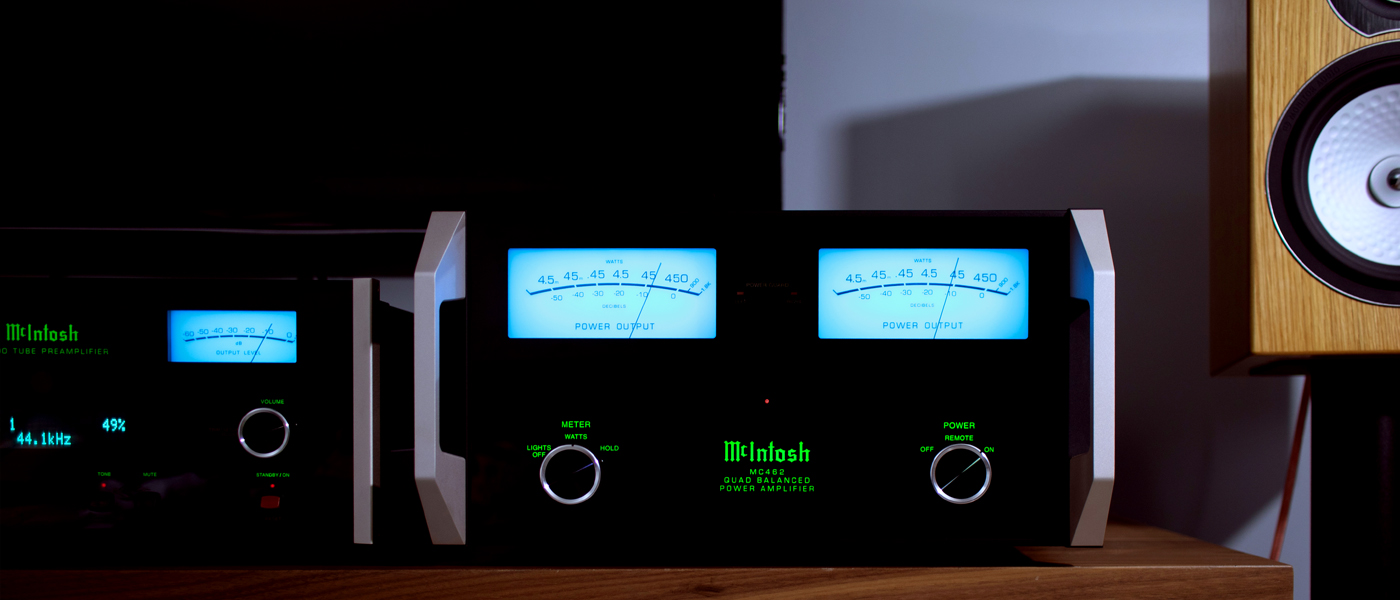Their new “intelligent” Class A-B stereo/mono power amplifier, the Vidar, sells for $699. And their new passive or active, solid-state or tube, balanced and remoted-controlled (are those enough features for you?) preamplifier, the Freya+, sells for $899.
That is an impressive number of features and possibilities for a surprisingly low price of $1598. It’s also quite a big pile of promises. Does Schiit Audio deliver on these promises with these two new components? I intend to find out. I’ll run them both in as many different configurations I can, with different types of speakers and sources, and compare them to several different amplifiers and preamplifiers, many of which far exceed their selling price.
Schiit Audio Freya+ Preamplifier and Vidar Amplifier
- The Freya+ features an amazing feature list for an $899 preamplifier.
- The Freya+ has five pairs of inputs and three pairs of outputs, so you can use a subwoofer with it or make it the heart of a full audio or theater system.
- The Freya+ can introduce you to the benefits of solid-state and tube sound with the flick of a switch.
- The Vidar amplifier is built like a tank, is essentially indestructible, and punches way above its weight.
- Both components can get you into balanced signal processing with XLR cables.
- Each comes with a 5-year warranty that covers parts and labor and includes an easy return policy.
- All Schiit Audio components are designed and built in the US.
- Schiit Audio’s customer service and social media presence are strong, so it’s easy to find support.
By now, if you have in any way been involved with high-fidelity playback in the past few years, either through headphone or stereo listening, you have heard of the Schiit Audio company. Based in Valencia, California, they sell direct to consumers and assemble their components in the US to keep their prices competitive. Their products sell for a wide range of prices that still manage to remain sensible. For example, their two-input passive preamp, the SYS, sells for $49 (and is a surprisingly good unit), and their most expensive component, the Yggdrasil DAC, sells for $2499 (and is, by many accounts, a giant killer).
The principals of Schiit Audio, Jason Stoddard and Mike Moffat, love nothing more than a challenge. They started the company in 2010 after designing dozens of components for companies such as Sumo and Theta. Initially, the company focused mainly on headphone amps, preamps, and DACs for headphone listening, some with tubes, some without. They then expanded with a phono preamp, the Mani ($179), and a tone control, the Loki ($149). All are relatively compact and can be used to build computer-based listening rigs on work desks, where a lot of listening happens nowadays.
Secrets Sponsor
Their social media presence is as sharp and strong as their sense of humor. As you can imagine, social media presence is very important in today’s day and age, especially because Schiit Audio sells direct to the consumer. But you can audition their gear in person at “The Schiitr”, a retail store they opened in Newhall, California. The company also uses distributors for countries other than the USA. Jason Stoddard is active on at least two audio web sites, and he will interact with people and answer questions directly and intelligently. When Schiit Audio released its new turntable, the Sol, recently, Stoddard actively sought feedback from users and took it back to the company to improve the turntable. So Schiit Audio is maintaining an active feedback loop to improve its products with its own customers. I can’t think of any other audio companies doing that nowadays.
And if you’re into that DIY or ASMR thing, you can subscribe to Schiit Audio’s YouTube channel and see several of their components being assembled, tested, and packaged. I think that’s pretty neat.
What the company does not build or sell are headphones or speakers. They just build and sell what you drive or send signals to those with. They recently decided to get into the amplifier game. That led to the introduction of two amplifiers, the Vidar ($699) and the Aegir ($799), and an integrated amplifier, the Ragnarok ($1499).
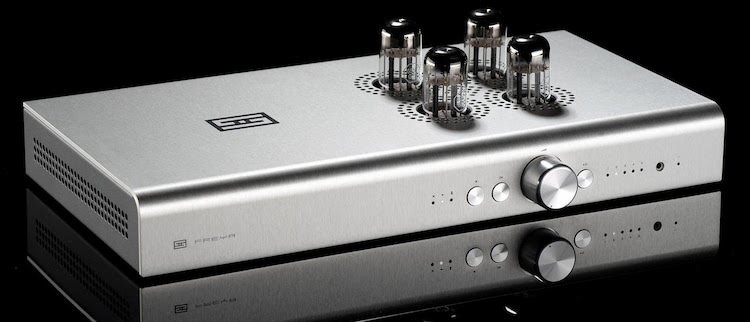
Schiit Audio Vidar Amplifier
CONFIGURATION:
Intelligent stereo/mono power amplifier
CHANNELS:
Two per amplifier, or one if run as a monoblock
POWER OUTPUT:
Stereo, 8 Ohms: 100W RMS per channel
Stereo, 4 Ohms: 200W RMS per channel
Mono, 8 ohms: 400W RMS
INPUT IMPEDANCE:
22k ohms SE, 44k ohms balanced
FREQUENCY RESPONSE:
20Hz-20Khz, -0.1db, 3Hz-500KHz, -3dB
TOTAL HARMONIC DISTORTION:
<0.01%, 20Hz-20KHz, at 100W RMS into 8 ohms
INTERMODULATION DISTORTION:
<0.01%, CCIR, at 100W RMS into 8 ohms
SIGNAL-TO-NOISE RATIO:
>115db, A-weighted, referenced to full output
DAMPING FACTOR:
>100 into 8 ohms, 20-20kHz
GAIN:
22 (27dB)
INPUT SENSITIVITY:
AKA Rated Output (Vrms)/Rated Gain. Or, 28V/22
INPUT IMPEDANCE:
22k ohms single-ended, 44k ohms balanced
CROSSTALK:
>95dB, 20-20kHz
POWER CONSUMPTION:
700W maximum
INPUTS:
Left and right RCA jacks for stereo input, single XLR for mono input
OUTPUTS:
Two pairs of binding posts
FRONT PANEL:
White LED light when the amplifier is powered on
REAR PANEL:
IEC power cord socket
AC power rocker switch
One XLR and two RCA inputs
DIMENSIONS:
9” wide x 13” long x 3.875” high
WEIGHT:
22 pounds
MSRP:
$699
Schiit Audio Freya+ Preamplifier
CONFIGURATION:
Active or passive, solid-state or tube, remote-controlled balanced preamplifier
COMPOUND DIFFERENTIAL BUFFER:
GAIN: 1 (0dB)
FREQUENCY RESPONSE: 20Hz-20Khz, -0.2db, 3Hz-500KHz, -3dB
TOTAL HARMONIC DISTORTION: <0.004%, 20Hz-20KHz, at 1V RMS
INTERMODULATION DISTORTION: <0.0055%, CCIR
SIGNAL-TO-NOISE RATIO: >120db, A-weighted, referenced to 2V RMS
OUTPUT INPEDENCE: 75 ohms SE, 600 ohms balanced
TOPOLOGY: JFET differential amplifier compound pair with equalized-gm followers
TUBE GAIN:
GAIN: 4 (12dB)
FREQUENCY RESPONSE: 20Hz-20Khz, -0.2db, 3Hz-200KHz, -3dB
TOTAL HARMONIC DISTORTION: <0.01%, 20Hz-20KHz, at 1V RMS
INTERMODULATION DISTORTION: <0.01%, CCIR
SIGNAL-TO-NOISE RATIO: >115db, A-weighted, referenced to 2V RMS
OUTPUT IMPEDANCE: 75 ohms SE, 600 ohms balanced
TOPOLOGY: differential triode input with semi-circlotron follower stage
FREQUENCY RESPONSE:
20Hz-20Khz, -0.1db, 3Hz-500KHz, -3dB
THD:
<0.01%, 20Hz-20KHz, at 100W RMS into 8 ohms
INTERMODULATION DISTORTION:
<0.01%, CCIR, at 100W RMS into 8 ohms
SIGNAL-TO-NOISE RATIO:
>115db, A-weighted, referenced to full output
DAMPING FACTOR:
>100 into 8 ohms, 20-20kHz
GAIN:
22 (27dB)
INPUT SENSITIVITY:
AKA Rated Output (Vrms)/Rated Gain. Or, 28V/22.
INPUT IMPEDANCE:
10k ohms
INPUTS:
Two XLR pairs and three RCA pairs, selectable via a front switch or remote
OUTPUTS:
One XLR pair and two RCA pairs, selectable via a front switch or remote
VOLUME CONTROL:
Relay-switched stepped attenuator with discrete thin-film resistors, 128 0.625dB steps
POWER SUPPLY:
One 48VA transformer with regulated 300V rail, plus 24VA transformer with regulated +/-18V rails, plus 6.3VDC tube heaters and regulated 5VDC for microprocessor
CROSSTALK:
>85dB, 20-20kHz
POWER CONSUMPTION:
40W typical
FRONT PANEL:
Two banks of white LED lights to indicate input and source when the preamplifier is powered on, one volume potentiometer and three selector buttons
REAR PANEL:
IEC power cord socket
AC power rocker switch
DIMENSIONS:
16” wide x 8” long x 2” high plus tube height, which is about 2.5”
WEIGHT:
11 pounds
MSRP:
$899
Website:
Company:
SECRETS Tags:
schiit audio, vidar, freya, amplifier, preamplifier, remote control, solid-state, tubes, reviews 2020, Amplifier Review 2020

OK, let’s get the history lesson out of the way. The names of both components derive from Norse mythology. Vidar was the strongest god behind Thor, and Freya is a goddess associated with love, sex, beauty, fertility, gold, war, and death. Freya also rode a chariot pulled by two cats. Now we can get to the technical stuff.
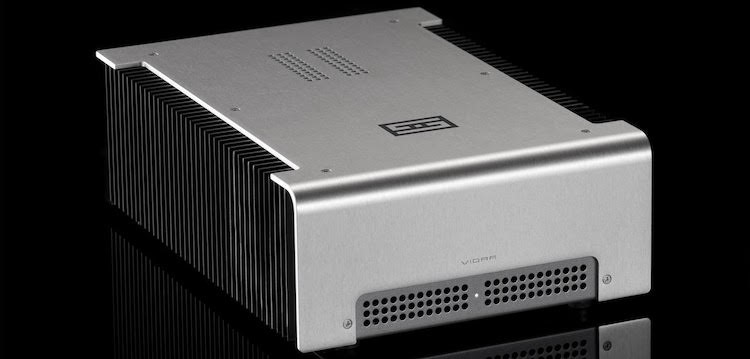
The Vidar is, as Schiit Audio describes it, an “intelligent stereo/mono power amplifier.” It has no Class D, no switching supplies, no fans, and nothing in the signal path. It is also a no-excuses, exotic-topology, Class-AB, linear-supply, microprocessor-controlled, power-doubling, dual-mono-ish, intelligently-managed, drives-almost-anything power amplifier. That’s a lot of words to say the Vidar is Schiit Audio’s assault on the current state and pricing of power amplifiers. They pack all of those features inside a single box and sell it for $699.
What makes the Vidar intelligent is its microprocessor, which monitors the amplifier’s operation parameters. If the microprocessor detects DC offset, excessive current draw, or excessive temperature, it will mute the amplifier and the front white LED light will blink.
As you’d want from any amplifier, the Vidar will protect itself if it gets too hot or if the speakers demand more current than the Vidar can provide. For example, if you’re driving a pair of 2-ohm speakers with a Vidar in stereo mode, or a pair of 4-ohm speakers with two Vidars in mono mode, the Vidar(s) can experience an over-current fault. A Vidar can also experience over-current if the speaker cables are shorted. But Schiit Audio’s got you covered for all of these conditions, and a Vidar is smart enough to protect BOTH itself and your checking account.
The Vidar is a DC-coupled amp, and its microprocessor monitors DC levels at the output and adjusts it down to zero. But if your source, such as your preamp, outputs too much DC, the Vidar will protect itself. To clear the fault, you power down the Vidar and disconnect the RCA or XLR cable(s) attaching the preamp to the amp, then power the Vidar back on. If the Vidar comes back on normally, there may be a fault with your source component. Then you get the offending component checked out before re-attaching it to the Vidar.
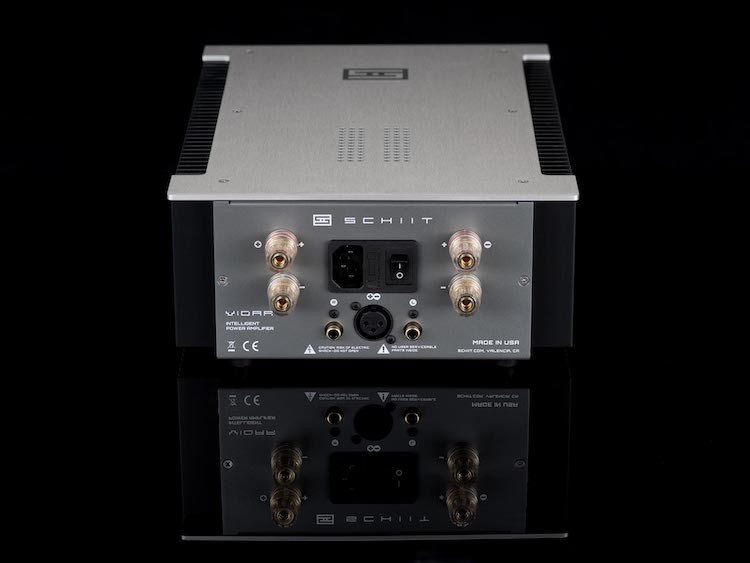
What makes the Vidar weigh 22 pounds is its internal 600VA transformer and heavy metal heatsink blades. Like all Schiit Audio components, it is a black and silver rectangle. Spartan, elegant, functional design. The front of the amp features round cooling ports inset into a black panel, with a white LED light in the middle. On the rear, you have four speaker outputs, one XLR input, an IEC port for power, and a toggle switch for power. The connectors are widely spaced, so you have plenty of space for your interconnect cables and banana plugs for your speaker cables.
First, there was the original Freya preamplifier, which Schiit Audio sold for about a year. They then decided to make it better, and in doing so forked it into two units, the tube-free Freya S ($599) and the tube-enabled Freya+ ($899). For the new Freya+, they managed to drop the noise floor by 20b and give it a signal-to-noise ratio of >120db, which is quite impressive at this price point.
One of the biggest selling points of the Schiit Audio Freya+ is that you can listen to it with or without the tubes powered on. Tubes certainly do have their quirks, and the learning curve can be steep for someone new to tubed electronics. Schiit Audio has designed the Freya+ to be about as easy a way to get into tube audio as I can imagine. Its tube stage uses a noise-canceling semi-circlotron output buffer to reduce noise and DC heaters. The Freya+ is delivered with a quad of the common 6SN7 tube, which has been in production for a very long time. But vacuum tubes don’t last forever, so the Freya+ will turn off the tubes when they aren’t in use. If you’re not using the tubes, the heaters and high voltage rails are turned off. That will ensure a longer life for whatever tubes you use. All of this gives you a safe and fun opportunity to change the sound of the Freya+ with different types and combinations of tubes.

Tube rolling is part of the fun of owning tube components. You can easily find brand new or vintage versions of the 6SN7 tube, or you can use N8S, 5692, 6SL7, and 6N9S tubes in the Freya+ and see how the sound changes. But if you want to try different tubes in the Freya+, know that the right tubes are for the differential voltage gain stage, and the left tubes are for the cathode follower output stage. Oh, and it’s worth noting that the Freya+ requires that its tubes are installed in order for it to work, even if you don’t listen with them powered up. You may be tempted, but don’t try it.
Schiit Audio brought other design innovations into the new Freya+, such as its volume control. It is a motorized, 128-step, relay-switched attenuator that enables essentially perfect channel matching and near-unmeasurable distortion. And you can control the volume with the remote control or your hand.
Another innovation is the differential JFET buffer stage. The buffers used by the Freya+ are designed to convert single-ended signals to balanced, which extends the types of components you can connect to the Freya+. It will also enable you to use single-ended sources to drive Vidar and Aegir amplifiers as monoblocks. And XLR cables will cancel noise when you use longer interconnects.
And then there are the inputs. There are five of them. You get two XLR balanced inputs, and three single-ended RCA inputs. And then there are also the outputs. There are three of those. One pair of XLR outputs, and two pair of single-ended RCA, so you can drive a pair of speakers and a subwoofer or two through a Freya+.
Both components arrived very well packed. In particular, the four JJ 6SN7 tubes for the Freya+ were separately packed, with a note bringing attention to the fact that the tubes are keyed, i.e., there is a notch in each tube’s base that must line up with the tube’s socket. As a veteran of tube gear, this is a no-brainer for me, but I get how this can be a surprise to folks new to tube-based components. And the more customer service you can do upfront, the fewer phone calls or product returns you have to deal with.
Knowing that putting in the tubes is no big deal. When you get the notch lined up correctly in the socket, push the tube down to seat it, and you’ll get a satisfying click. There’s a nice solid sturdy quality to the tube sockets. Generally, it’s a good idea to keep the tubes clean, so consider wearing cloth gloves or using a clean cloth when handling the tubes to keep finger oil off of them.
Setting up the Vidar was the easiest, as you can imagine. A quick word of warning, however: the metal heat sink blades of the Vidar are quite sharp. I recommend wearing a pair of sturdy gloves to move a Vidar around. After placing the Vidar in my component rack, I attached the IEC power cord Schiit Audio provided and plugged it into my P.I. audio UberBUSS power conditioner. I put the banana plugs of my speaker cables into the sturdy terminals in the back of the amp and ran RCA cables to the Freya+. I connected the Vidar to my Spatial Audio M4 Triode Master speakers for first listening.
The Freya+ is the first preamp I’ve had in my system with balanced inputs. I’ve been looking for an excuse to try XLR connections, so this gave me an excuse to buy two pairs of Zu Audio Mission XLR Mark I cables. I used a pair of these to connect the output of my Oppo UDP-205 into the Freya+. I used another pair of these XLR cables to connect the output of my Parasound Zphono XRM phono preamplifier to the Freya+. And I still had three pairs of single-ended inputs to use in the Freya+. Five inputs in a tubed preamp in this price range are quite nice.
I had to send output from the Freya+ to the Vidar through one of the pairs of RCA outputs the Freya+ provided. If you’re using only one Vidar, you have to use RCA connections. If you’re using two Vidars as separate mono amplifiers, then you can use the XLR connections.
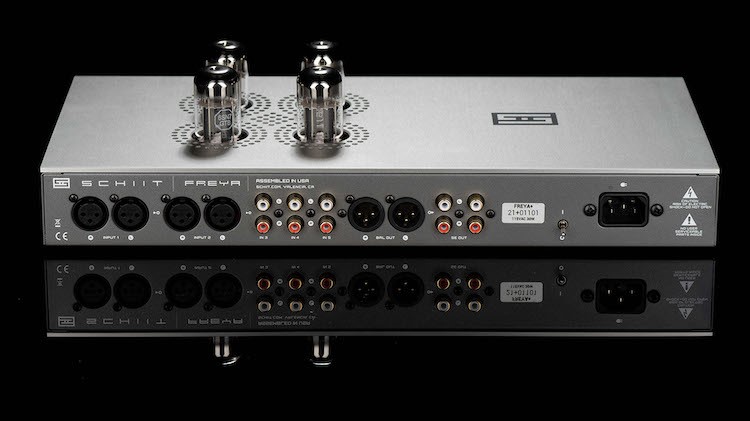
For the year prior, I’d been using a Schiit Audio SYS preamp to tide myself over as I drag my components into the 21st century. The SYS preamp punches well above its weight for its fairly ridiculous price. $50 dollars gets you a passive preamp with two single-ended inputs and a surprisingly fast and transparent sound. But as soon as I powered up the Freya+ in passive mode I heard much more low-level detail. The difference was instantly recognizable. Not a bad way to start at all.
The volume control of the Freya+ is a relay-switched stepped attenuator with discrete thin-film resistors and 128 0.625dB steps. And what immediately surprised me about is that it makes a funny crunching sound when you adjust the volume potentiometer by hand or with the remote. It actually sounded like the crunch you get when you break a stalk of celery. But don’t worry, the sound is normal. That’s the motorized actuator doing its thing. So don’t freak out, even if it does sound like you’re breaking something. By now it should be obvious that the Freya+ is the first component I’ve ever used with a motorized potentiometer, so my excitement may be a little too much.
I found the sound of the Freya+ to be very fast. The timing of notes, and details within notes, improved considerably when I replaced the SYS with the Freya+. I could hear much deeper into the sounds coming out of drums, for example. The entirety of AC/DC drummer Phil Rudd’s thuds against floor toms had an easy-to-hear beginning, middle, and end. This was evident to me whether I was using the Schiit Audio Vidar or my McIntosh MC2505 amp with the Freya+.
I do enjoy trying tweaks with components, so I put one of Herbie’s Audio Lab’s Tenderfoot feet under each corner and put three stabilizer weights on the top of the chassis. These additions did improve the focus of the music, but your mileage may vary. The stock JJ 6SN7 tubes were a bit crackly the first few times I heated them up, but they got quiet after they got a few hours on them. I can’t explain that, but it is worth mentioning.
Secrets Sponsor
The sound of these two Schiit Audio components is effortless, and it can maintain the human warmth of recordings. The Vidar amp has a lit-from-within quality that somehow manages to convey sweat and effort, which is something my vintage Mcintosh MC30 tube amplifiers excel at. I can’t really explain it that much better, other than I notice it when it’s missing, and I miss it when it’s gone. And the Freya+ did a good job of getting out of the way of the quality of the music coming from the sources and traveling through the Vidar to the speakers.
Both components were dead silent. Using XLR cables to attach the Oppo UDP-205 and Parasound Zphono XRM phono preamp I heard no hiss or hum. It’s kind of a bummer that I can’t attach a single Vidar with XLR cables, but I understand where Schiit Audio is coming from with that configuration. They actually recommend against buying two Vidars and running them as mono amps, when more likely as not you’ll only need one. To be honest, I thought I would end up needing two Vidars to drive my 12-ohm Spatial Audio M4s, but that was clearly not the case. The Vidars provided more than enough energy and headroom for these speakers, to such an extent that dynamics were exceptional. I could hear how the energy of a note would vary throughout its life; the breath coming out of a pair of human lungs is rarely perfectly consistent, and the Vidar could single out a single note’s lifespan and energy and still portray it with accuracy.
I started listening with the Freya+ set to its passive output, to get a baseline. It is faster and gets more detail out than the SYS. The Freya+ gave me startling holographic imaging. But when you fire up the tubes, it gets really interesting. Before I could see the bright light of the candle’s flame, but with the tubes, I could feel the candle’s heat as well. Listening to mono LPs through the Freya+, I could hear very deep into the soundstage; I could hear the room around Mr. Sinatra as he crooned, and hear the string section in the back of the soundstage of the Capitol Records recording space. When listening through the tubes, the bass had more impact and I could feel it in my chest more easily. Voices and timbres became rounder and richer, so even though you wouldn’t expect it, I heard even more detail through the tubes. It’s as if each and every note somehow gained more importance in the flow of the music. Impressive. Running the Freya+ with its tubes active can decrease the output gain a bit, but I did not find this to be noticeable in my system.
The Freya+ includes a small aluminum remote control with five buttons, and it’s powered by one of those wafer-thin watch batteries. Each button is black and has a very small white icon on it. At first, I found myself squinting at the buttons or looking at the manual to figure out how to get the remote to do what I needed, but once I had memorized what each button did, it wasn’t so bad.

The volume potentiometer is the biggest knob on the face of the Freya+. There are also three smaller selection buttons. Above each button and LED indicator light is printed a very, very small icon or number. As I did with the remote control, I found myself either squinting at the buttons or looking at the manual to understand what each button did or what each LED light indicated. My eyesight simply isn’t good enough to quickly understand these icons, so I had to memorize the purposes of the buttons and lights. I can understand why this is the case, as the surface areas of these rather small components present a difficult design and printing challenge.
During my time with the Freya+ and Vidar, I received a pair of Polk Audio Legacy L600 speakers to review. These big Polk speakers are completely different from my high-efficiency Spatial Audio M4 Triode Masters. After achieving so much good synergy between Schiit Audio and Spatial Audio, I decided to see how the Vidars would work with 4-ohm, 80-pound speakers with four drivers in them. The minimum power requirement of the Polk Audio speakers is 100w, and the Vidar can output 200w into 4 ohms. How did it work out?
Well, the Vidar didn’t break a sweat at all. I honestly expected the power-hungry Polk Legacy L600 towers to put such a demand on the Vidars during sudden peaks, like explosions in movies, that the Vidar’s self-protection would kick in, but not once did that happen. The Vidar will protect itself if it detects that its heatsinks are too hot, if it detects over-current, or if it detects a high DC offset. If that happens, the white LED on the front of the amp will blink. Depending on the cause of the shutdown you turn the amp off and back on, check your cables, or disconnect the RCA or XLR cables from the back of the amp and restart it.
The Polk Audio Legacy L600 towers did begin to sound a bit thin when I really pushed the gain on the Vidar, so I could see where the speakers demanded more than the Vidar could deliver. But these were just tests, and otherwise, the Vidar powered the big Polk Audio speakers with no trouble at all. And even after powering these big speakers at high volume, the Vidar did not get very warm. It was not uncomfortable to touch its chassis or heatsinks after some high-SPL listening.
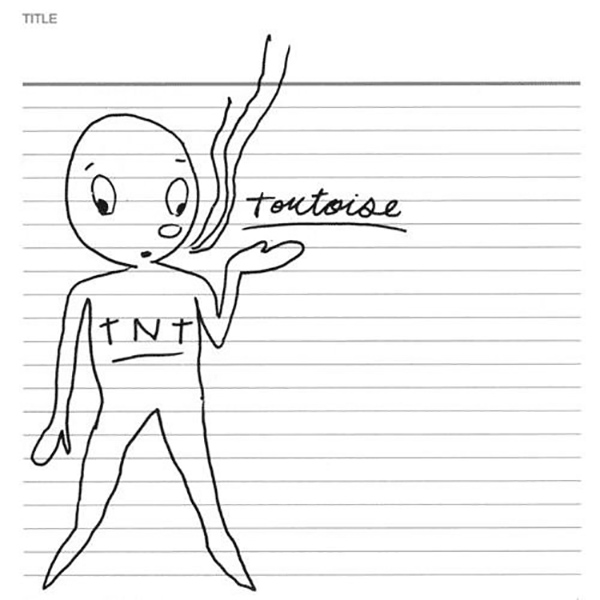
Tortoise “TNT” HDCD
This album was recorded and engineered by band member and drummer John McEntire, who did the same for some of the songs on Stereolab’s “Dots and Loops” album a year earlier. I like to think of Tortoise as a contemporary version of The Soft Machine if that band had added electronics and studio effects and slowed it all down just a bit. This album was released by the Thrill Jockey label as an HDCD and it very well captures the open room the music was played in.
The Freya+ and Vidar kept the notes flowing correctly, even when notes from acoustic instruments like bassoon, cello, and cornet stayed in one place on the soundstage while electronic effects swirled around and around. The drums are recorded particularly well on the album, with the snare drum having a very satisfying snap, and the Freya+ and Vidar were able to let me hear the snare wires on the bottom of the drum. And the vintage analog synths used throughout had the appropriate brap and rumble.

The B-52’s “The B-52’s”
I attached the Polk Audio Legacy L600 speakers to the Vidar with bi-wire cables to run one of my favorite bass-note tests: the song “Dance This Mess Around” on the first album by The B-52’s. I use this song as a reference track because the band didn’t use a 4-string bass player for this album; the bass notes were played on what I believe was a Vox Continental organ. A good, deep, raspy sound, but each note has a distinctive beginning, middle, and end, and hearing the full detail of how those notes dissipate is important.
The Freya+ and Vidar dug deep into those keyboard bass notes, and let me hear the sweat of it all.
Hearing the song played with this combo made me want to boogie. The bass drum notes had the proper punch and I could hear the air exiting out of the big drum, and the Vidar made the speakers move enough air so that I could feel the bass drum in my chest. But the music also had a greasiness to it, helped along by the vocal harmonies of the band’s singers. That just goes to show that the Freya+ and Vidar weren’t so sterile as to ignore the human aspect of the music.
It’s worth noting that I would have assumed I’d need a pair of Vidars to make the big Polk Audio L600s sing. The L600s are a 4-ohm load and expect at least 100w. The Vidar can output 100w, but that’s with an 8-ohm load. But I just couldn’t see the need for another Vidar. It got the bass notes and all the music moving along plenty fine. Granted, I don’t think it would have hurt to have another Vidar, but knowing I could drive such demanding speakers with just one of these Vidar amps is impressive.

Peter Hammill “Patience”
This album from 1983 finds Hammill, another guitarist, and two of his Van Der Graaf Generator bandmates making straightforward but fierce rock music. As usual, Hammill’s lyrics here are erudite and clever and matched only by the ferocity of the four-piece band. But there is a fair amount of dated effects placed on the instruments, such as artificial echo on the drums and piano. It was the 1980s, after all.
But the Freya+ and Vidar accurately enabled me to hear the core of the music – the bass guitar and drums in particular – and see how the effects were used to artificially fatten up the sound. Even under all that echo, I could easily hear the skronk of saxophone, the ping of ride cymbals, and the synthesizers, without the intent or flow of the music becoming confused or muddy.
- Very good value for the money. These two components provide a quality of sound I didn’t think possible in this price range.
- Sold direct to the consumer and assembled in the US.
- The Freya+ preamplifier provides a huge list of features for its price. Its adaptability to different kinds of systems seems limitless.
- The Freya+ preamplifier is a relatively inexpensive and safe way for somebody to get into tube sound.
- Schiit Audio’s customer service and media presence are excellent.
- Five-year-long support warranties.
- The Vidar is a bulletproof solid-state amp with punch, power, and transparency, while still providing a tube-like warmth. Surprising, given its price.
- Easier to read icons on the face of the Freya+ and remote control, but that is a very minor quibble.
The Schiit Audio Freya+ preamplifier and Vidar amplifier can serve as the heart of a very musical and versatile playback system. The Freya+ preamplifier can control either a simple two-channel system or a home theater setup, and you can add tube sound to your system with the click of a button. The Vidar amplifier produces a solid and articulate sound whose quality belies its price. Their selling prices are quite reasonable, which makes them excellent purchases for someone new to the hobby. And Schiit Audio customer support will be there for you. Recommended.


